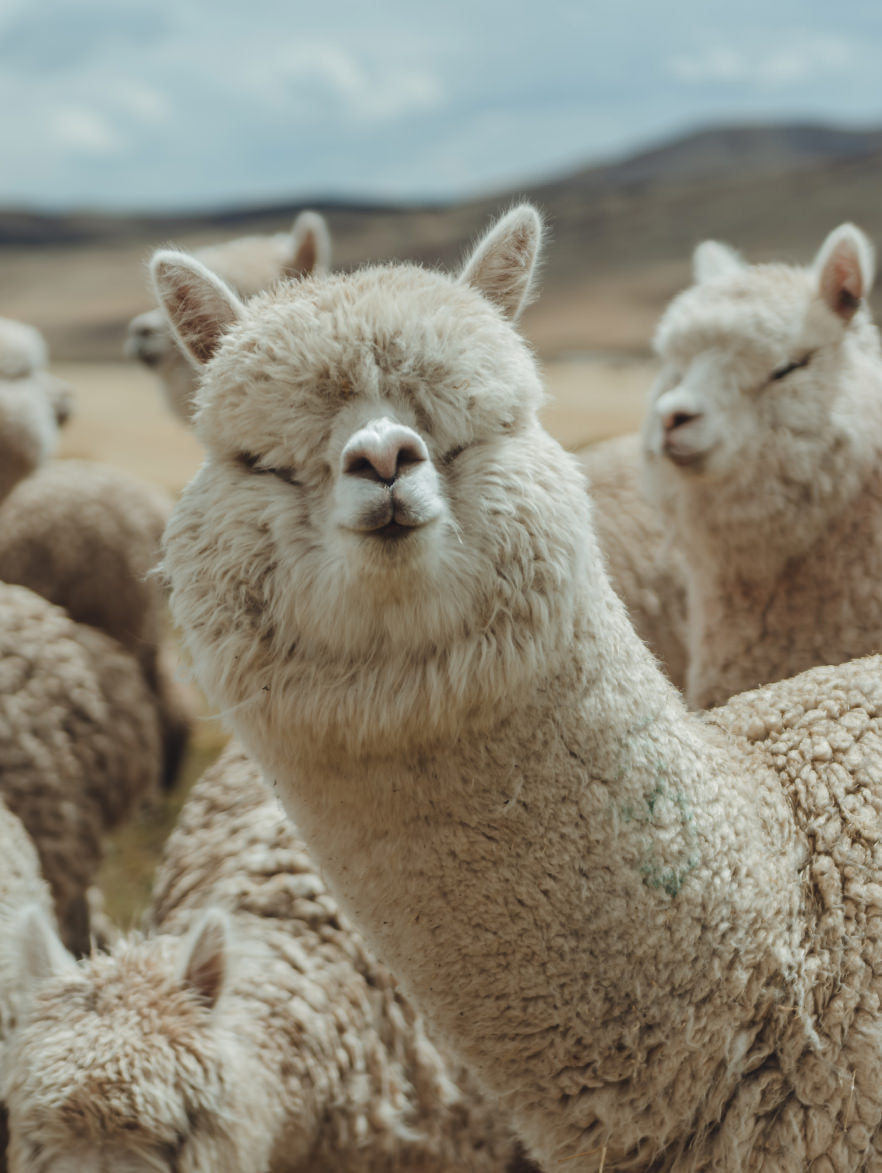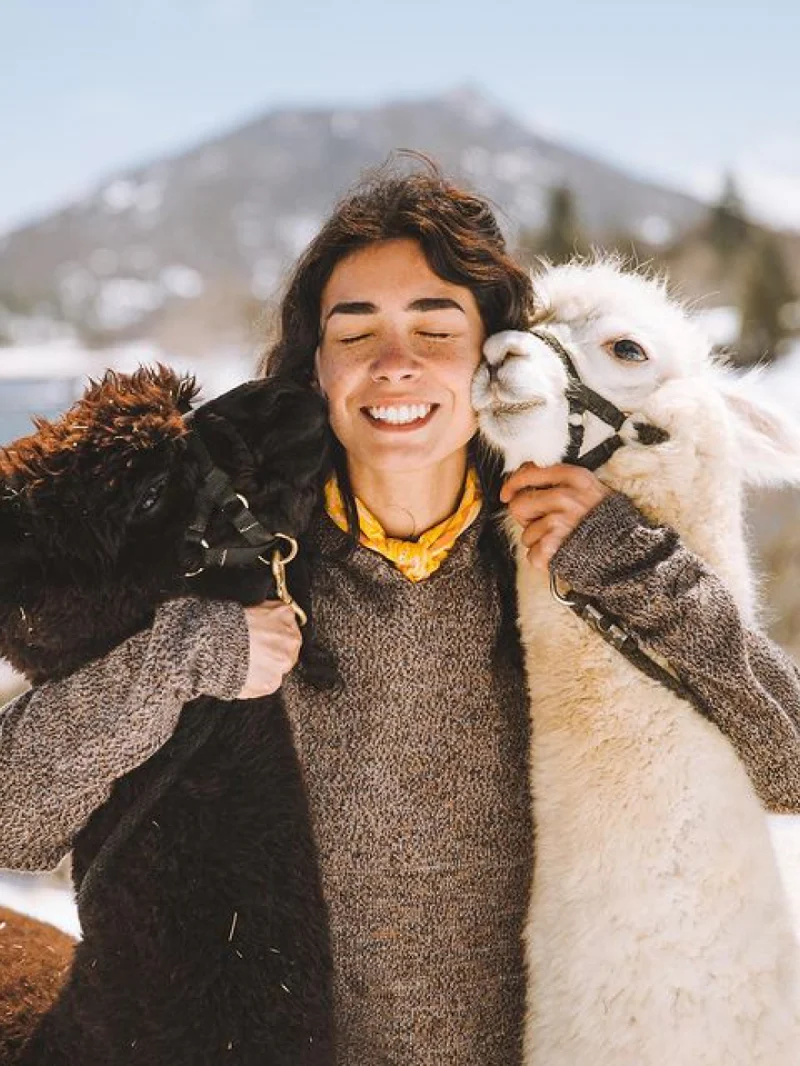



The art of alpaca shearing is a task that requires both finesse and fortitude. It's a delicate dance between man and animal, an undertaking that’s as old as our relationship with alpacas, which is to say, thousands of years old. But for those unfamiliar with alpaca shearing, it may appear to be a process rooted in stress and uncertainty as the shearer coaxes the fluffy critter while the alpaca, with a haughty toss of its head, silently protests the shearer's every move. The end result, however, is a magnificent mound of alpaca fiber that’s processed and fit for use in all manner of apparel. And the labor, though swift and skillful, is actually rooted in love and understanding.
Here, we break down the alpaca shearing process to help you understand how we source these magical fibers, and why. And we answer a number of questions we often receive from those that want to know more, with insights from community members we work with in Peru. So grab your shears and hold on tight as we dive into the wooly world of alpaca shearing.


The Shearing Process
Alpaca shearing, though complicated and confusing if you’ve never done it before, is actually a rather simple process that, when mastered, takes only a few minutes.
Before shearing takes place, the alpaca herd is rounded up to make the process as quick and easy as possible. Because alpaca fiber doesn’t contain lanolin or other heavy oils, it doesn’t need to be cleaned before shearing takes place. Any dust or debris trapped in the fiber usually falls off on its own, and a good shake removes excess dirt if need be.
Once the herd has been assembled and the shearers are ready to go, each animal is taken care of one by one to ensure they receive proper attention. While sheep are often positioned on their bottom when shearing, the alpaca is actually laid on its side or belly, and its front and hind legs are tethered to keep it still.
One handler will hold the alpaca’s head while another shears the fleece from one side with a set of alpaca shears that looks something like an oversized razor. The alpaca is then turned on its other side and sheared again from head to toe. The whole process from start to finish takes anywhere from 5-10 minutes and once complete, the alpaca is set free to roam the Peruvian countryside once again.




How Often Are Alpacas Sheared?
Alpacas are typically sheared once a year, usually in the springtime (which takes place in December in Peru) before the warmer weather makes its way across the country. “We start cutting the wool from the month of November,” explains Miguel Turpo Condori, a third-generation alpaca farmer. “But if the rains don't come even then, we wait until December. The wool grows once the rain starts.”
By shaving the alpaca only once every year, the animal can regrow a full coat of wool before the colder weather arrives.
That said, the shearing frequency technically depends on factors such as the climate, the quality of the wool, and the animal's health. Some alpacas may be sheared twice a year if they live in a warmer climate, or if their wool grows quickly. Farmers also take into account how the wool is used when deciding how often the animal should be sheared. “We shear to sell the wool to the market once a year and to make clothes every two years,” notes Turpo Condori.




Why Are Alpacas Sheared?
Alpacas are sheared for several reasons, but the most important has to do with their health. Without regular shearing, an alpaca's wool can become matted, dirty, and even develop skin problems, but by removing their wool, alpacas are kept cool and clean, which helps prevent health issues such as heat stress and serious skin conditions. Shearing also serves as an opportunity to trim the animal’s fighting teeth and clip their toenails if need be.
Alpaca wool is also highly valued for its softness, warmth, and durability. The quality of the wool can be improved by shearing, as it encourages new, high-quality fibers to grow, which can be used in clothing and textiles. Unlike the llama, alpaca is “soft, fine, and strong,” says Turpo Condori. He’s also quick to point out that while sheep’s wool has a very strong smell, alpaca fiber is incredibly resistant to odor. Ultimately, shearing is an essential part of caring for alpacas, and maintaining the quality of their wool is an added benefit.




Why Are Alpacas Restrained For Shearing?
If you’ve never really watched someone shear an alpaca, the fact that we tie down the animal’s feet may appear stressful, but doing so actually ensures the safety of both the animal and the shearer.
Generally speaking, alpacas are used to shearing because they undergo the process every year, and they have for generations. But restraints can help keep the alpaca still and prevent them from moving around, which reduces the risk of injury to both the animal and the shearer. It's important to note that proper handling and restraint techniques are essential to ensure the well-being of the alpaca, which is why we work closely with experienced shearers in small communities that have made it their life’s mission to work with these amazing animals.
“The person who does the shearing is experienced,” explains Turpo Condori. “A long time ago, it used to be much more difficult—we used to shear alpaca with a knife. It took my grandparents approximately 40 minutes to cut with a knife, but now we can shear the alpaca much more safely and quickly” thanks to modern techniques and gentle restraints.




Alpaca Shearing: A Labor Of Love
At the end of the day, alpaca shearing isn’t about giving the animal a fresh new haircut—it's about keeping our alpacas healthy and happy. And in doing so, we have the opportunity to harvest their fleece and put it to good use, all while supporting local communities that have relied on this animal for centuries. So the next time you slip into your favorite alpaca sweater or toss on some cozy alpaca socks, reflect on the labor of love that went into making these garments possible. Sure, we’re a little biased, but we think alpacas are pretty darn special, and their health is too.








